Where Have All the Trick-or-Treaters Gone on Halloween? Destination Neighborhoods
Urbanism and car culture play a role in eroding the holiday tradition, but so too has the consolidation of trick-or-treat to destination neighborhoods via social media.
Halloween is not just about the silly costumes or candy; the holiday represents an important communal, civic, and connected cultural tradition of Americana. In recent years, Americans have been noticing fewer and fewer trick-or-treaters knocking on their doors.
In 2023, I wrote for Strong Towns about how the tradition of trick-or-treat was worth saving, tying its demise to our choices in urbanism and refusal to slow down cars. In that piece, I also decried trunk-or-treat as merely a cheap imitation of the real thing—a take which drew considerable pushback.
Here on College Towns last year, I addressed these criticisms of my article and defended my continued derision of trunk-or-treat. There was one critique, though, that has stayed with me: the real reason for the trick-or-treat decline was the rise in destination neighborhoods.
Defending Derision of Trunk-or-Treat Halloween
Trick-or-Treat Is Worth Saving was the title of my article that I penned for Strong Towns last Halloween. My thesis: the American tradition should not be lost to our dangerous streets, explicitly arguing that the trunk-or-treat version was a cheap imitation.
I have come to believe that this destination theory is indeed an important part of how the holiday tradition has been changing. Urbanism still plays a part, yet problems can be multifaceted, even ones about kids in costumes collecting candy. In this piece, I grapple with the consolidation of trick-or-treat to destination neighborhoods.
What Are Destination Neighborhoods?
I must credit Daniel Herriges, formerly of Strong Towns and now at Parking Reform Network, for first keying me into the theory that destination neighborhoods were the real villain in trick-or-treat’s demise. “I think a bigger factor in the decline of trick-or-treating is that so many families now drive to a ‘destination’ neighborhood instead of simply heading out where they live,” he posted on X. “My cousin got 727 trick-or-treaters tonight. We saw about 15.”
More and more people can relate to what Herriges was describing on Halloween.
These are the so-called destination neighborhoods, where entire streets are decked out with Halloween decor block after block. Each house has a spooky theme, the goodies given out are top quality, and everyone is welcome to join in on the fun. These destination neighborhoods are simply awesome. They are everything I love about the holiday, but because they are so good, they overshadow regular neighborhoods.
Destination neighborhoods can sometimes rival the offerings at amusement parks during Halloween. In fact, here in Southern California, I always hear about neighbors who formerly worked at Disney putting their Imagineering to work on Halloween decorations. Unlike Disneyland, though, joining in on the fun in a destination neighborhood doesn’t cost the family $1,000. Any kid can get a bucket of free candy and experience Haunted Mansion-like thrills.
People drive from miles and miles to participate in destination neighborhood festivities. The same kind of dynamic has long happened with Christmas. The difference is that Christmas lights are more passive, while Halloween is active. The night of Halloween is the only trick-or-treat night.
It is no wonder that kids and families want to attend a Halloween in a destination neighborhood. Given that it is just one night, there’s a choice between staying local or driving to the destination. One option is neighbors handing out only one pack of Smarties at a time while the other 70% of houses have their lights off. The other choice is essentially a free trip to a Disneyland park. Easy choice.
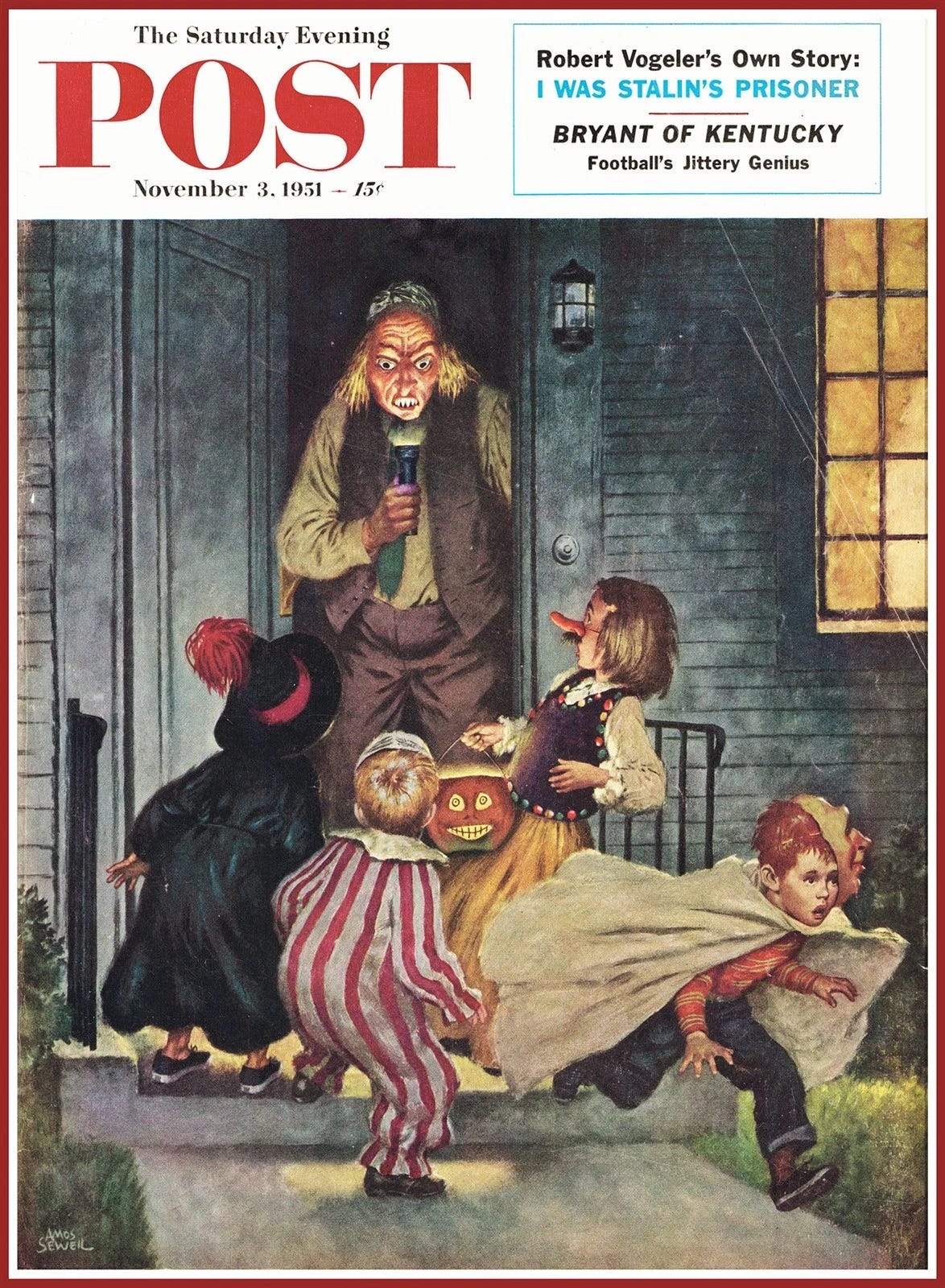
Social Media and Crowdsourcing Halloween
When I was a kid, there were always rumors that neighborhoods in Edmond, a wealthy suburb north of Oklahoma City, always gave out full-sized candy bars during Halloween. But this was long before smartphones or social media, so the myth of Edmond Halloween remained an urban legend. I, instead, happily enjoyed the fun-sized candy bars in my own neighborhood with all my friends and neighbors.
Social media, though, removes the mystique. Newsfeeds confirm that there are true destination neighborhoods where kids come back with war chests of candy. Scroll through TikTok, Instagram, or any social media, and you will see videos, photos, or posts about these destination neighborhoods. It turns out, the urban legends were all true.
These social media posts are not just showing off the candies and animatronics, users actively promote guides and how-tos for finding these mythical Halloween destinations (see above video). They are calls to action for finding the best place to celebrate the holiday.
It is not just social media either. Companies are actively pushing the concept of destination neighborhoods to the consumer. There is now a range of mapping and listings of the best Halloween neighborhoods.
Instacart now has a Scarescore metric. NextDoor has a Treat Map. Zillow released its Trick or Treat Index over a decade. Target even created some kind of social network called Treatster to boost sales and social media views
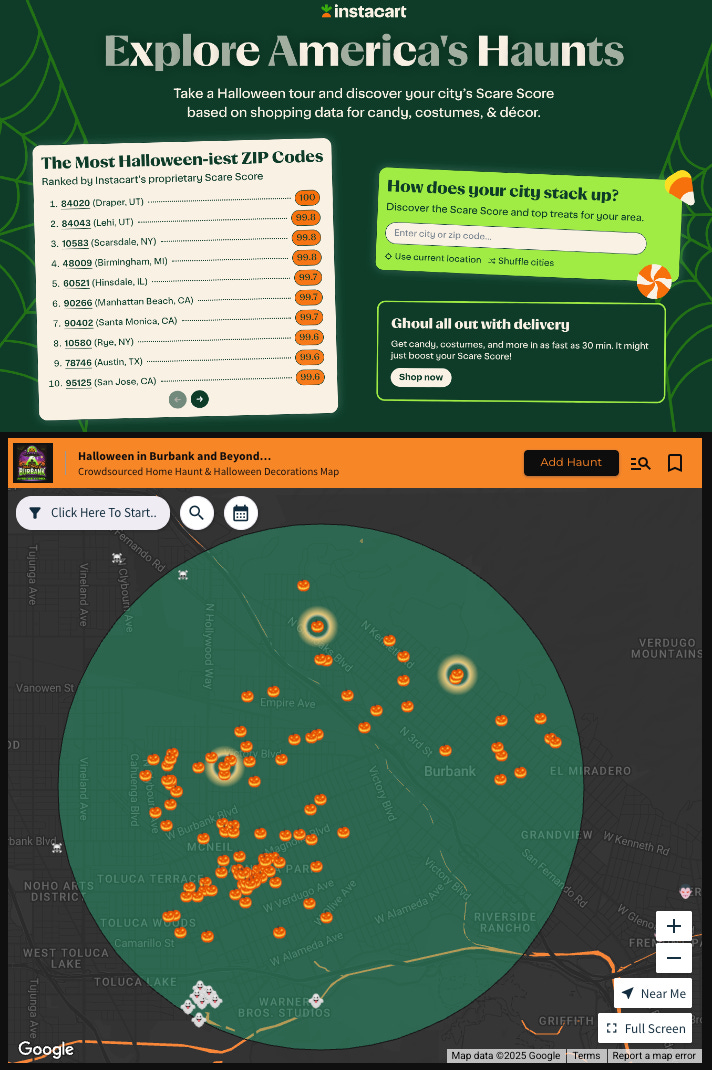
Of course, locals have already long been making their own maps for years. Crowdsourcing through social media has only supercharged the ease of information travel. There are easy platforms to create personalized maps like Proxi to be shared around.
My guess is that these kinds of metrics or maps are not even very good. What they do, though, is implant the idea that there are destinations out there. Locals then confirm by searching for the best neighborhoods on various social media platforms.
“Are there any good neighborhoods for trick-or-treating?” is a common question this time of year in any local subreddit. Users will happily contribute with their favorite neighborhoods. It’s nice that people are helping a 6-year-old experience the joys of trick-or-treating; it’s just too bad so many places are opting out of the tradition that we must consolidate to fewer and fewer destinations each year.
The holiday has been flattened. If I were a kid today, I would have confirmed Edmond as the Mecca of candy. And with my own neighbors fading in participation, my family would have made the 40-minute trek up north of Oklahoma City. Parents do this because they want their kids to experience that same magical Americana that they had during their childhood.
Giant Skeletons Are The Obscene Wealth of America
Some people have been telling me that I am crazy, and that trick-or-treat hasn’t gone anywhere because their own neighborhood is still packed. I believe them! I acknowledge that the tradition of trick-or-treating hasn’t simply disappeared. Americans still love Halloween. We are just in a long, slow slide of participation by some communities.
In fact, with all the doom and gloom over the loss of trick-or-treat, spending on Halloween has still steadily increased in recent years, hitting an all-time high of $13.1 billion in 2025, according to the National Retail Federation. I should add, spending on decor has actually surpassed how much Americans spend on candy.
Of course, destination neighborhoods are often wealthy neighborhoods. Places with million-dollar homes are going to be more likely to dole out each year for boxes of full-sized candy bars or giant 12-foot skeletons. It is an arms race where one neighbor loves spending a couple of thousand dollars on Halloween. Spending drops in places that no longer have trick-or-treaters, but rises in the affluent neighborhoods that become the destinations.
People love those 12-foot skeletons. While I admit that they are pretty fun, sometimes people go overboard, verging on the absurd. Some of the recent offerings from the Big Box stores, like inflatable figures, are pretty hokey. Some people even go nuts with these, cramming every display from Costco and Home Depot into their lawn. Nonetheless, research also suggests that neighborhoods that participate in holiday decorations - even the hokey kind - have stronger social linkages1.
The very best neighborhoods often eschew the mass market stuff in favor of more bespoke decor that looks straight out of a paid haunted house. In fact, some places will even create an actual haunted house that people can enter on the holiday. It is this stuff that truly reinforces the destination nature because they are truly one-of-a-kind experiences.
Are We the Baddies?
After pointing the finger at social media, companies and big box stores, and income inequality, I must admit that I am part of the problem.
I used to live in one of these destination neighborhoods: Old Towne Orange, California. It was awesome. I loved it (see the video below). I tell people about it all the time, I post photos on my social media, and I even wrote about it in Strong Towns. All of this means I am part of the problem in making Old Towne Orange an even stronger destination neighborhood.
The neighborhood where I lived was an old streetcar suburb with wonderful urbanism. It has a small walkable downtown that can get quite lively at night, with beautiful old Craftsmens and other pre-war housing (including some duplexes, where I lived!). There are nice tree-covered streets, plenty of sidewalk space (except on Halloween), and charming front porches without short setbacks. It is a suburb, yes, but the density and amenities make it a rare place in the sprawl of Orange County.
There is also a lot of local civic pride in Old Towne. They even organize various awards for the best house decorations! It is these kinds of older suburbs, which still retain their civic pride and have better urbanism, that usually make for the best destination neighborhood. Although I do admit that new suburbs can still be destinations, so it is not all simply all urbanism.
Since I switched jobs, I moved closer to my new university, but my new neighborhood doesn’t have (any) spirit. Even though we did put up decorations the past two years, we didn’t get any trick-or-treaters. I am sad to say that this year, I flaked on putting up our decorations. I don’t think anyone in the neighborhood will notice. It is this exact cycle happening across the country, consolidating trick-or-treat to the Old Town Oranges.
From Walking to a Driving Holiday
The rise in destination neighborhoods still highlights issues that I wrote about in my protection of trick-or-treat and derision of trunk-or-treat articles. Despite a multifaceted cause, the changes to Halloween illustrate broader declines in aspects of American society.
This spiral of the holiday is only part of a long, slow erosion of civic connection that many Americans have had to a local community. Losing trick-or-treat doesn’t mean civic connections disappear. No, instead, losing a neighborhood-based tradition is just one aspect out of many that have brought on broader social isolation in the county.
With the dropping birth rates and housing crises in various parts of the country, kids in neighborhoods have also been thinning out in a lot of places. As kids stop knocking, more houses choose to stop participating. The remaining kids are then pushed off to those affluent neighborhoods. If they are driving out of their own neighborhoods, it might as well be to the place with the best candy and killer decor.
With the rise of trunk-or-treat and destination neighborhoods, Halloween has gone from a primarily walking holiday to a driving holiday. As I mentioned in my previous pieces, the holiday was maximized as a suburban activity. One that highlighted walking within a single-family neighborhood where the strict zoning didn’t constrict the fun of the holiday.
The holiday that was supposed to be about walking in the local neighborhood community has turned into fast food. It is now drive-through trick-or-treating. Parents increasingly face two limited options on Halloween:
Drive to the church for trunk-or-treat.
Walk around a parking lot surrounded by cars.
Drive to the neighborhood with full-sized Snickers and 12-foot skeletons.
Find parking, wait in line, drive home.
So, yes, trick-or-treat still exists. It is still a popular and strong holiday tradition. But it is becoming less of a local neighborhood tradition where people walk together, and now it is a holiday that necessitates more driving. We are losing something important when trick-or-treat consolidates around destination neighborhoods. It is just another fading tradition of Americana.
Admittedly, this research is not great and is really dated. We need more Halloween researchers!



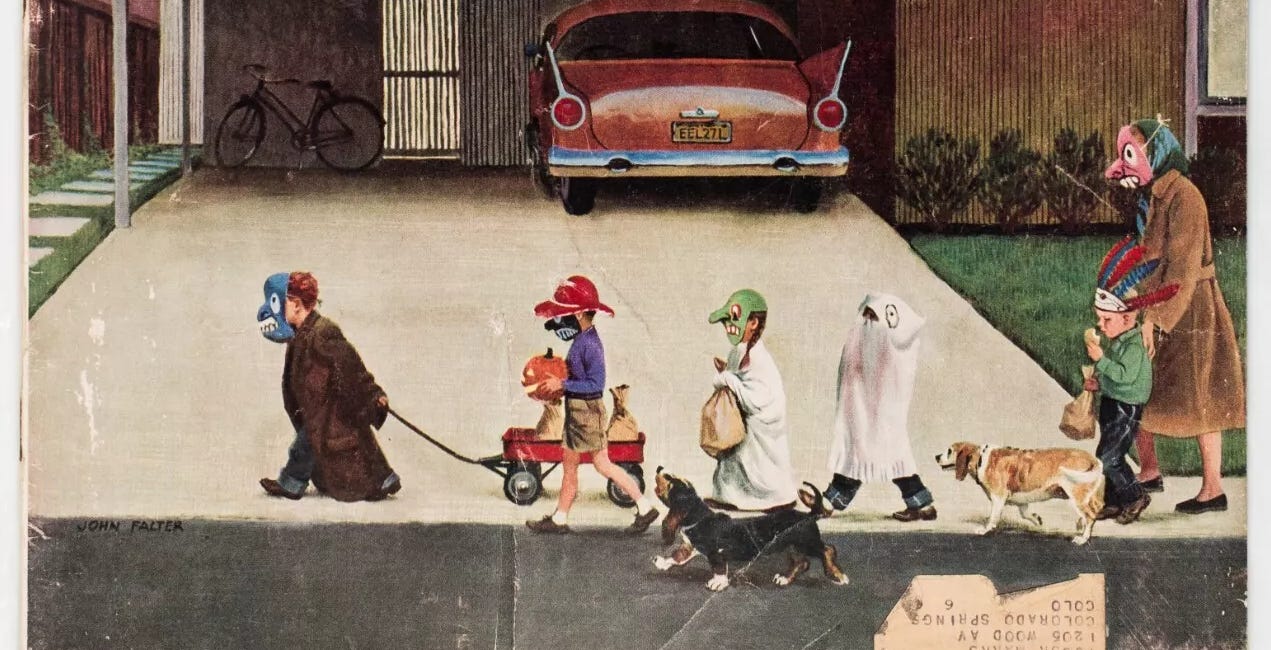
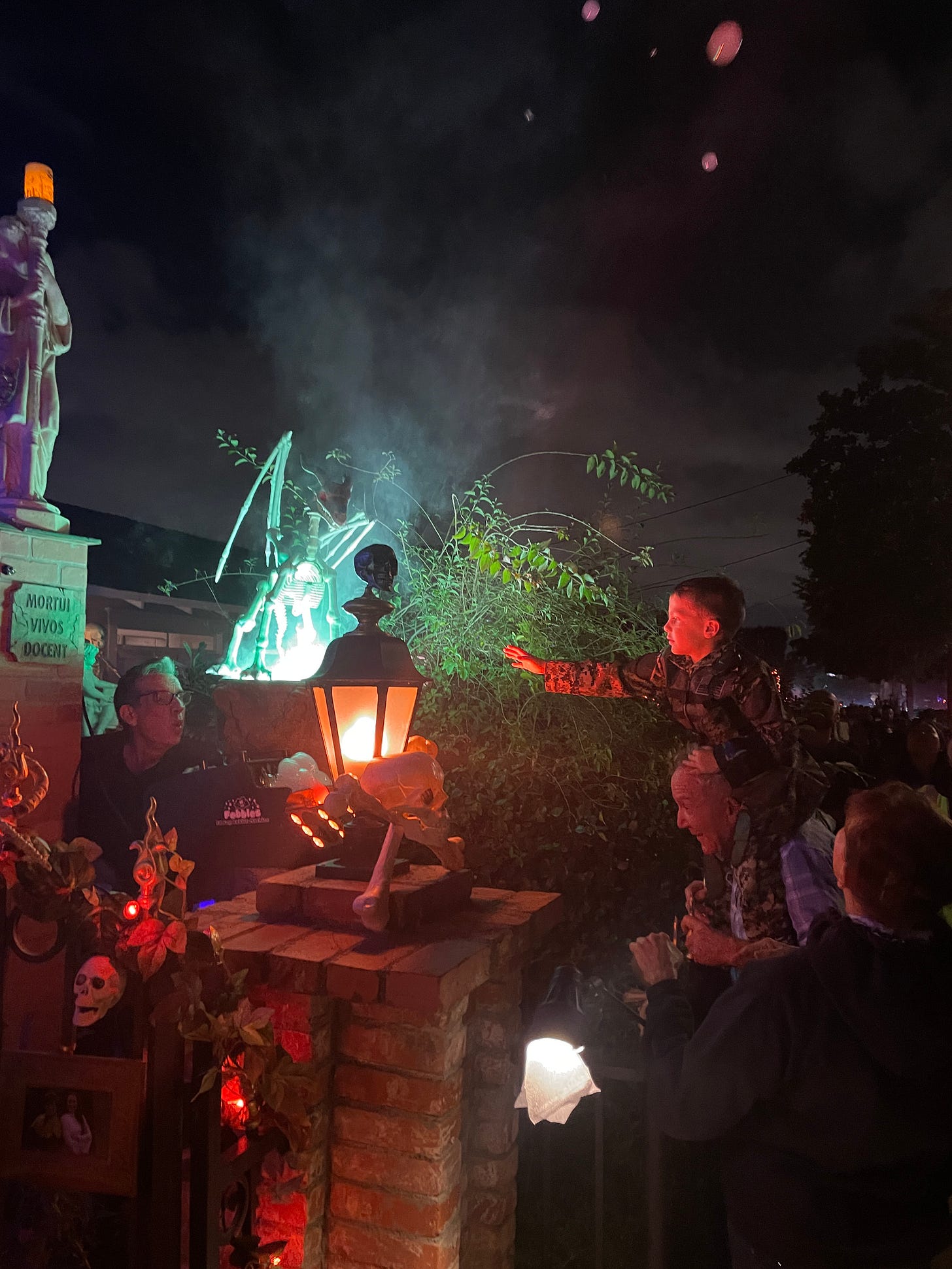
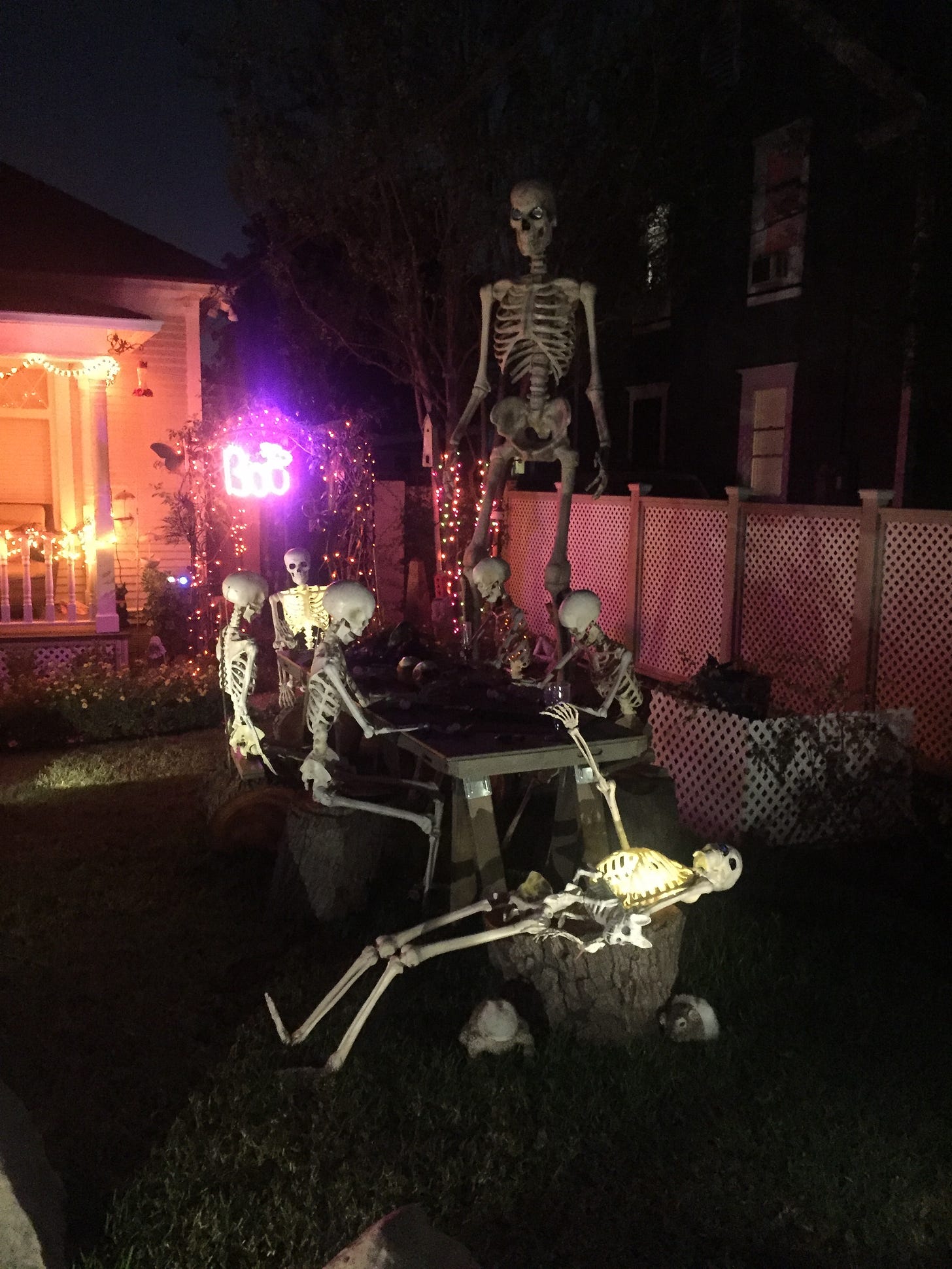
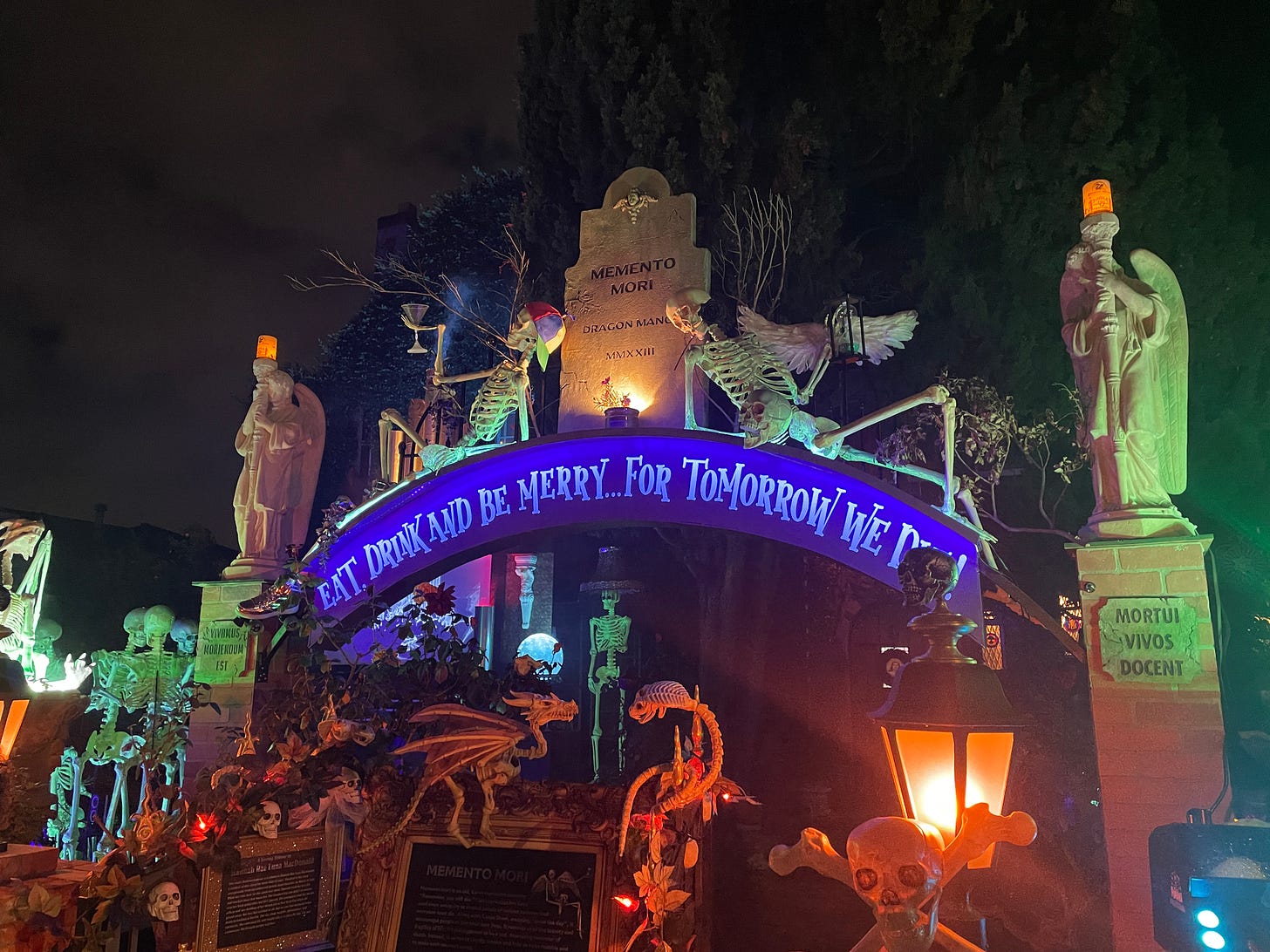
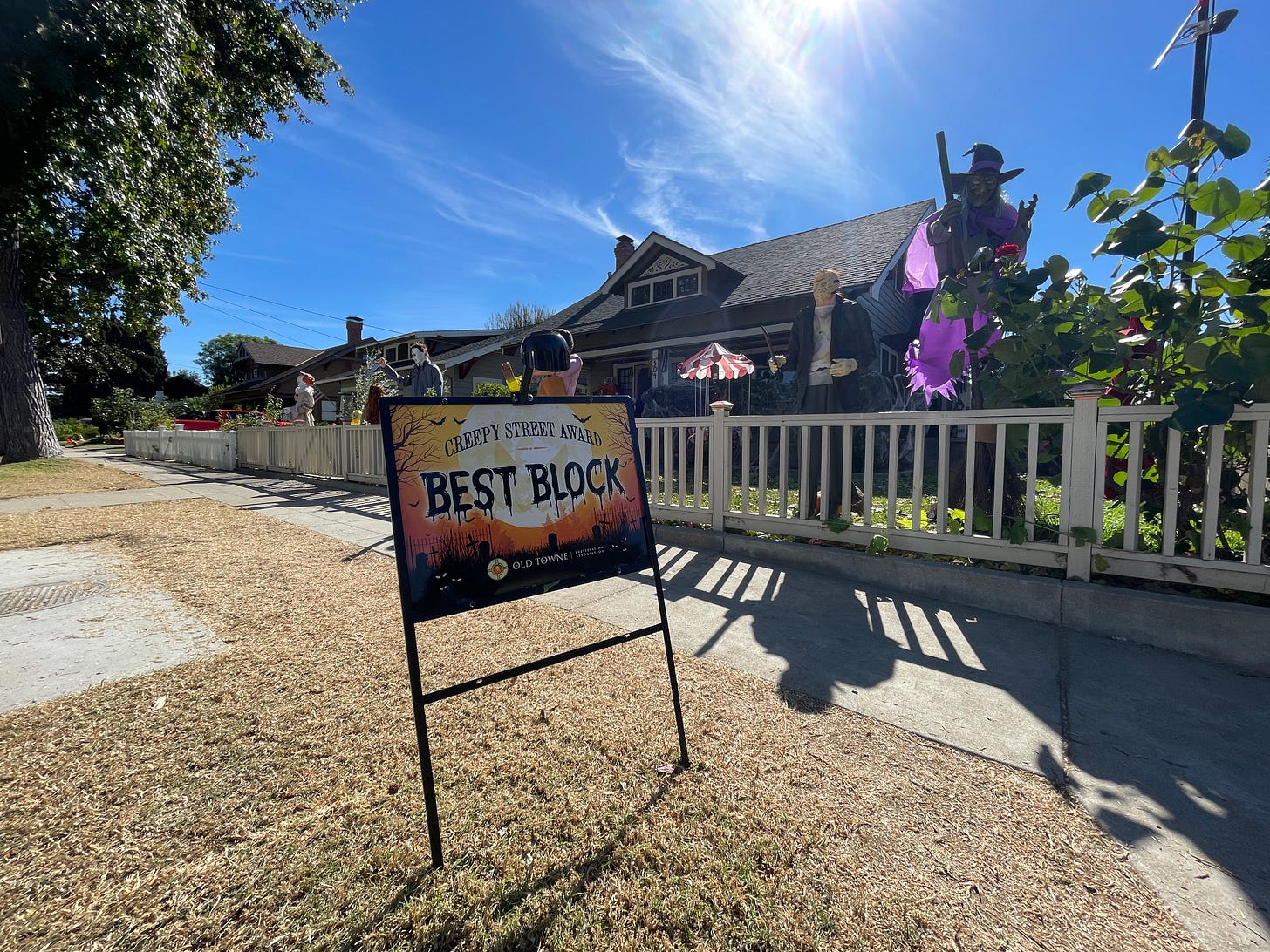
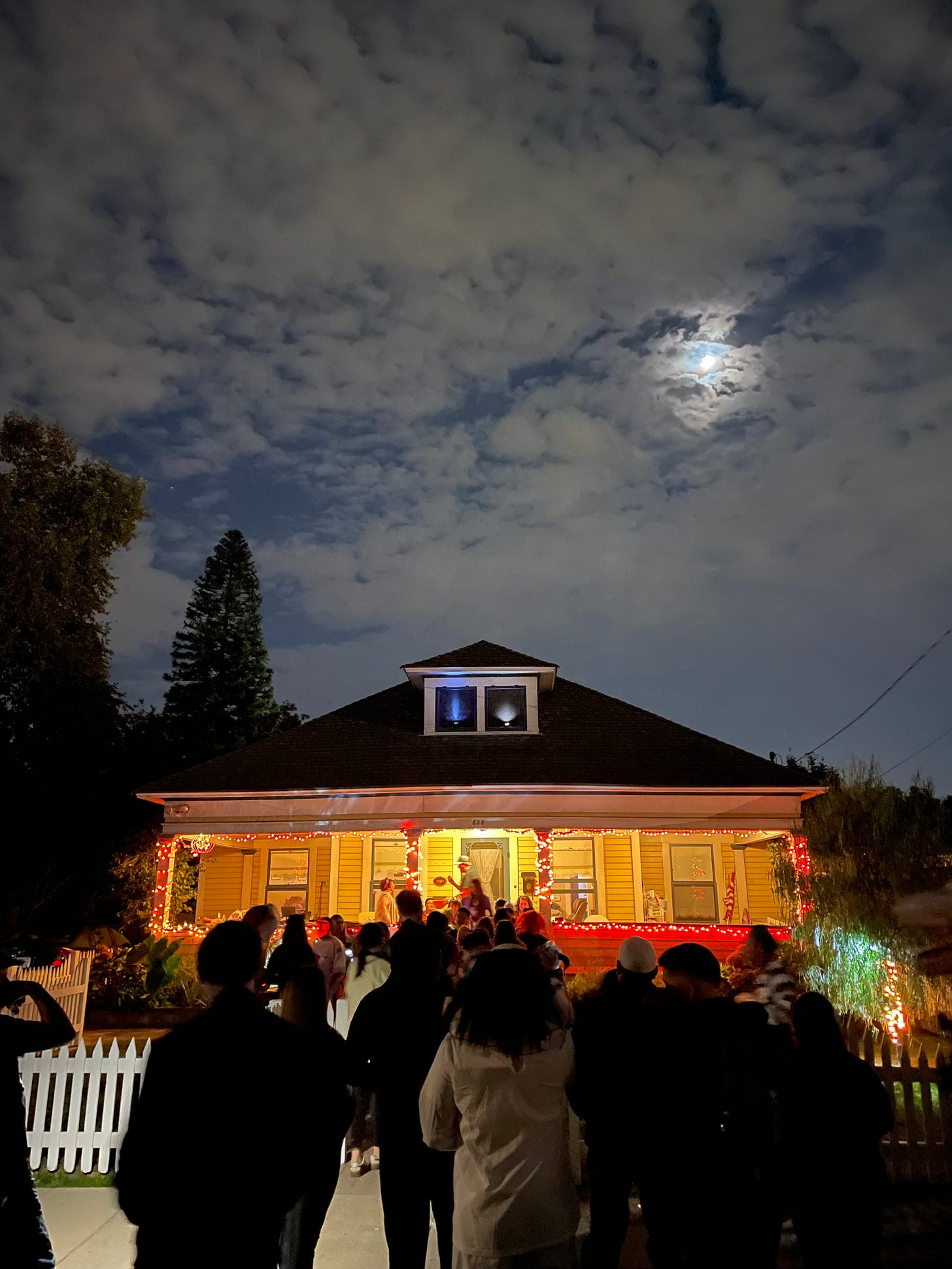
I think the core phenomenon of people traveling to popular Halloween spots isn't actually new, in the 90s and early 2000s, places like Old Towne Orange, Huntington Beach, and parts of LA drew crowds from all around for block parties, haunted houses, and even parades.
But it's most definitely not the same. Today, social media has amplified certain neighborhoods' reputations exponentially, often beyond what residents anticipated or intended and when crowds grow beyond planning capacity, it can create real problems.
Maybe the path forward is what some communities are already doing like embracing it intentionally with permits, partnerships, and proper planning rather than resisting what seems inevitable. The impulse to seek out special Halloween experiences has always been there; it just needs the right infrastructure to work for everyone.
I live on a destination street and it is SO much fun - but I still totally agree with your point here. It's fun for me because I get to stay in my own neighborhood. I would be so bummed to have to drive somewhere else for my kids to trick or treat. Halloween has become yet another kid thing taken over by adults involving themselves too much (and by social media, consumerism, etc.).